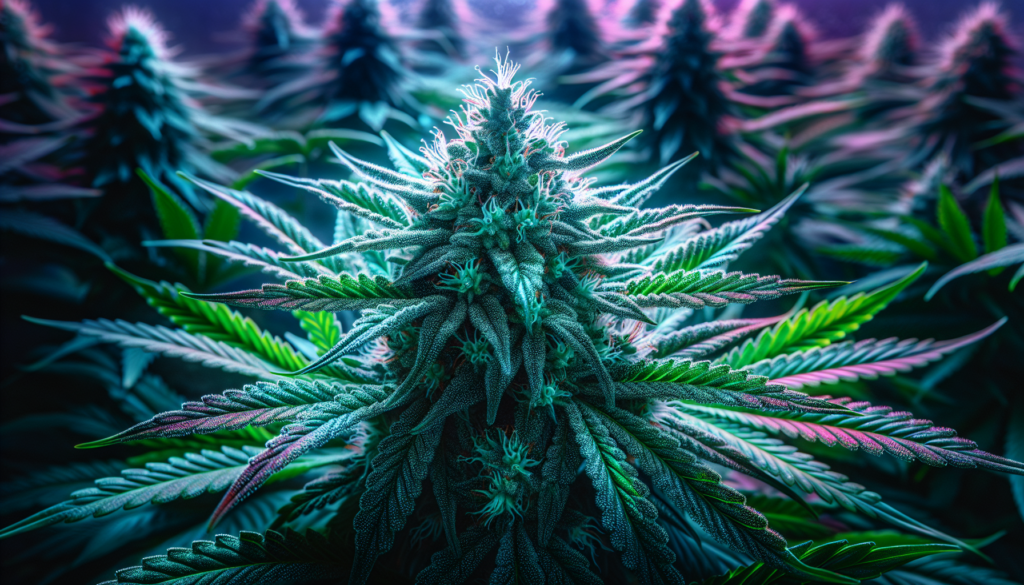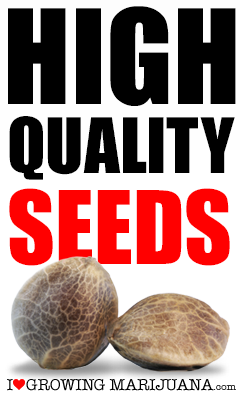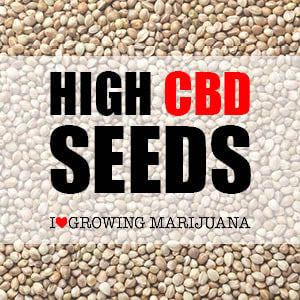How To Increase Trichome Production

How To Increase Trichome Production.
If you’re on a quest to boost the resinous sparkle on your cannabis plants, gearing up for a bountiful trichome harvest is key. Think of trichomes as tiny crystal-like factories pumping out the potent smells and flavors you love, not to mention those precious cannabinoids. Enhancing trichome production can turn your already impressive buds into the talk of the town, and lucky for you, it’s not just about having a green thumb. By dialing in on specific techniques, from lighting tweaks to stress induction, you can encourage your plants to reach their frosty potential. Let’s get your grow on track for a glittering success!
Understanding Trichomes
What are trichomes?
You’ve likely noticed those tiny, sticky crystals that cover high-quality cannabis buds, giving them a frosty appearance. These are trichomes, the resin glands of the cannabis plant. They’re not just there for show; trichomes are powerhouse structures where cannabinoids (like THC and CBD) and terpenes are produced. These cannabinoids and terpenes are the compounds responsible for the plant’s effects, aromas, and flavors.
Why are trichomes important?
Trichomes are incredibly important for several reasons. First and foremost, they contain the active chemical compounds that provide the recreational and medicinal benefits you’re looking for in cannabis. Additionally, in the wild, they serve as a defense mechanism to deter herbivores and protect against harmful UV rays and other environmental stresses.
Factors affecting trichome production
Several factors can influence how well your cannabis plant will produce trichomes. Genetics play a big role, but environmental factors such as lighting, temperature, and humidity also have significant effects. Nutrients, watering, and the presence of pests or diseases can also impact your plant’s trichome production.
Choosing the Right Cannabis Strain
High trichome-producing strains
If you’re aiming for maximum trichome production, your choice of strain is crucial. Look for strains known for their resin abundance—typically, these will be the ones with a reputation for high potency and strong aromas. Strains like White Widow, Gorilla Glue, and any with “Kush” or “Haze” in their names are often sure bets for high trichome yields.
Genetic factors influencing trichome production
Not all cannabis plants are created equal when it comes to trichome production. Certain genetics will naturally produce more trichomes. These genetic factors include the plant’s lineage and its specific cannabinoid and terpene profiles, which are bred over time through selective breeding practices.

Optimizing Growing Conditions
Lighting requirements
Light is like food for your plants, and getting the right amount and type is critical for trichome development. Cannabis plants typically need high-intensity light—think full-spectrum LEDs or HPS (high-pressure sodium) lights to encourage vigorous growth. The light should mimic the sun’s spectrum to spur trichome production during the flowering stage.
Temperature and humidity control
A stable environment is key to successful trichome production. During the flowering stage, keep temperatures a bit cooler, between 65-80°F (18-26°C), with humidity levels around 40-50%. These conditions mimic the natural environment where cannabis thrives and can encourage your plants to produce more trichomes.
Nutrient considerations
Nutrients are your plant’s food, so you need to ensure a well-balanced diet for healthy trichome production. Specifically, phosphorus and potassium are critical during the flowering stage. Providing the right nutrients at the right time will result in not just healthy plants, but also in maximum resin production.
Air circulation and ventilation
Proper air circulation and ventilation are crucial for maintaining the environment your cannabis needs for trichome production. Good airflow helps prevent mold and pests, which can destroy developing trichomes, and it also strengthens the stems, so they support heavier buds laden with trichomes.
Implementing Proper Pruning and Training Techniques
Topping and FIMing
Topping and FIMing are two pruning techniques that can help increase trichome production by creating more flowering sites. Topping involves cutting off the top of the main stem to encourage lateral growth, while FIMing (short for “Fuck I Missed”) is a less severe technique that also encourages bushier growth and more sites for budding.
Screen of Green (SCROG) method
The SCROG technique involves spreading out the plant’s branches and weaving them through a horizontal screen. This exposure to light maximizes the plant’s energy efficiency and can lead to increased trichome production since more buds develop directly under light sources.
Low-Stress Training (LST)
LST is all about gently bending and securing your plants’ branches to create a flatter canopy for more even light distribution. Rather than stressing the plant through cutting, you encourage more horizontal growth, resulting in more trichome-rich buds.
Defoliation and lollipopping
Defoliation, or the careful removal of leaves during flowering, can improve light exposure and airflow to buds, potentially enhancing trichome development. Lollipopping, which involves removing growth from the lower part of the plant, directs the plant’s energy towards the top buds, which can increase their potency and resin production.

Using Supplements and Enhancers
Importance of macronutrients and micronutrients
Macronutrients (NPK – nitrogen, phosphorus, potassium) and micronutrients (like calcium, magnesium, and sulfur) are the building blocks of healthy cannabis plants and, by extension, plentiful trichomes. A balanced feeding schedule, tailored to your plant’s growth stage, ensures these essentials are met.
Beneficial supplements to increase trichome production
Supplements like bat guano, worm castings, or bloom enhancers can give plants an extra boost in nutrients, encouraging more vigorous trichome production. Just be sure to follow the recommended rates to avoid nutrient burn.
Organic vs. synthetic supplements
Organic supplements can promote healthier soil life and lead to better overall plant health, which can be beneficial for trichome production. Synthetic nutrients offer more immediate results but can build up salts that may harm the beneficial microbes in your soil.
Foliar sprays and root drenches
Foliar sprays can be used to give plants nutrients directly through their leaves during the vegetative stage, while root drenches deliver nutrients to the root zone. Both methods can be effective in ensuring your plants have the necessary nutrients for trichome development.
Applying Light Stress Techniques
Light intensity and spectrum manipulation
Manipulating light intensity and spectrum can stress your plants in a good way. Increasing light intensity or changing the light spectrum to one with more UV light can potentially increase trichome density as the plant produces more to protect itself.
Light stress timing and duration
Be cautious with light stress techniques—timing is everything. Implementing these methods too early or late in the plant’s life cycle can harm growth instead of helping it. As a general rule, use light stress sparingly and mostly during the flowering phase when trichome production ramps up.
Light stress pros and cons
While light stress can encourage trichome production, there’s a fine line between just enough stress and too much, which can stunt growth or damage your plants. It’s essential to monitor your plants closely when using these techniques.
Harvesting at the Right Time
Monitoring trichome maturity
Trichome maturity is a reliable indicator of when to harvest. You’ll need a magnifying tool to check the color of your trichomes. Clear trichomes are immature, milky white ones indicate peak THC levels, and amber ones suggest degrading THC but increased sedative effects.
Determining the ideal harvest window
Your ideal harvest window is when your trichomes have the right balance between milky and amber. This is usually a tight timeframe, so checking your plants daily as they approach maturity is crucial.
Effects of early or late harvests on trichome production
Harvesting too early can mean less potent buds, as trichomes haven’t fully developed. Harvest too late, and you risk degrading the cannabinoids within the trichomes, so timing is key for maximizing potency and yield.
Post-Harvest Techniques to Enhance Trichomes
Proper drying and curing methods
Drying and curing properly can significantly affect the quality of your trichomes. Dry slowly and cure in a controlled environment to preserve terpenes and cannabinoids, ensuring a potent and aromatic final product.
Trimming techniques
Trimming is often done after drying and can affect your trichome density. Hand trimming is more gentle on trichomes than machine trimming, which can knock off these precious structures.
Handling and storage considerations
Handle your cured buds as little as possible to protect the trichomes. Store them in airtight containers away from light and heat to maintain potency and flavor over time.
Exploring Trichome Preservation and Extraction
Methods for preserving trichomes
To preserve trichomes post-harvest, keep your buds in conditions that are cool, dark, and dry. Humidity-controlled containers can be a great investment to keep your trichomes in tip-top shape.
Different extraction techniques
Extraction techniques, such as dry sifting, bubble hash production, and solvent-based extractions, allow you to isolate and concentrate trichomes for various uses. Each method has its pros and cons in terms of complexity, safety, and purity of the final product.
Use of trichomes in various cannabis products
Concentrated trichomes are used to make a range of cannabis products, from kief and hash to oils and tinctures. These products can pack a more potent punch because they contain a higher concentration of cannabinoids and terpenes.
Addressing Common Challenges and Pitfalls
Pests and diseases affecting trichome production
Pests like spider mites and diseases such as powdery mildew can wreak havoc on your trichome production. Regularly inspecting plants and implementing organic pest control methods can save your crop from these threats.
Nutrient deficiencies and excesses
Nutrient imbalances can hinder trichome development. Yellow or browning leaves can signal an issue. Stick to a well-rounded nutrient schedule, and don’t overfeed—more is not always better.
Overcoming environmental obstacles
If you’re growing in a less-than-ideal climate, you’ll need to work harder to control the environment. Indoor operations will benefit from a good HVAC system, while outdoor growers should select resilient strains and use greenhouses or shading techniques as needed.
Avoiding common mistakes
Finally, common blunders like overwatering, over-pruning, and harvesting at the wrong time can all affect trichome production. Learning from these mistakes is part of the journey—ensure you research, stay vigilant, and adjust your care to ensure maximum trichome yield.










